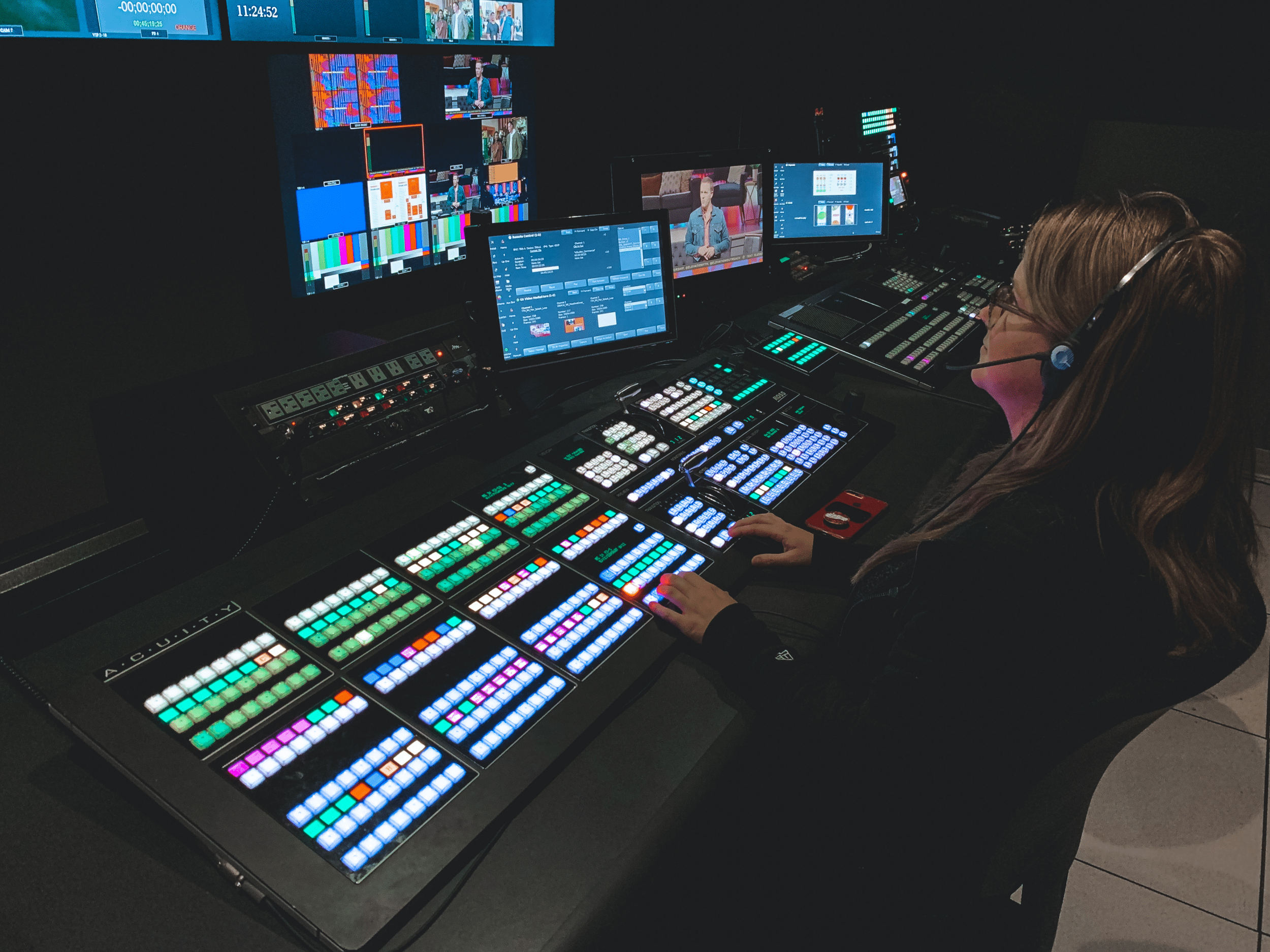April 23, 2021 - Ross Video Team, Industry Trends
Five Models of Live Production You Need to Know


Two weeks ago, Matthew Webster, Broadcast Technical Specialist at Ross, joined the Digital Production Partnership’s (DPP) “Going Live & Remote” webcast with broadcasting experts from BBC News, Sky Sports, and more. Throughout the session, they discussed how the media industry has been using innovative technology to produce shows remotely in the “new normal” of the COVID-19 pandemic.
If you missed the webcast, don’t worry. The DPP’s “Going Live & Remote” Insight Report is available now – click here to download it. The report, which is sponsored by Ross Video, goes into detail on the five key production models that address the four primary constraints most producers face. Here’s a summary of the models to help you find the most appropriate one for your production.
The traditional model in which content acquisition, signal processing, and production control are co-located; whether at a studio complex or an outside broadcast. It is the baseline by which other models are judged, using tried and tested workflows that enable production teams to work closely together and maximize creativity.
Remote-controlled production moves the control surfaces and operators to an offsite location such as the broadcaster’s headquarters while keeping processing at the acquisition site. This approach has been popular during the pandemic to improve social distancing, but also has broader applications in reducing crew travel while making use of existing outside broadcast equipment and infrastructure.
This model moves the signal processing and production control to a central hub location, such as the broadcast center. A great deal of bandwidth is required to transport all the audio and video feeds from the acquisition site, but the model delivers higher utilization of equipment and crew, lower capital investment, and lower carbon footprint. As a result, it is one of the two models predicted to grow most dramatically in the next two years.
This architecture also usually involves centralized signal processing but offers additional flexibility by enabling crews to remotely control the production from multiple production hubs, or even from home. It adds complexity to the connectivity provision, but in return, it offers the potential to reduce travel even further, while opening up access to the best talent no matter where they are.
The final option locates some or all of the signal processing in the cloud, controlled remotely from production hubs or from home. It offers similar benefits to distributed production, with additional flexibility and scalability, and lower capital costs. As the capability of software production tools improves rapidly, cloud production will join centralized production as a dominant model.
Having defined five key models of live production, it’s worth examining the reasons why you might choose one over another for your production. There are four primary constraints and considerations to review when making this decision: content, bandwidth, latency, and cost.
Creative potential is maximized when the production team can communicate seamlessly. This can be achieved remotely, but there are still advantages to having the bulk of the crew in one location as they would be in the On Location or Centralized production models.
Bandwidth is a key limiting factor at many sites, and connectivity is now part of the site assessment for outside broadcasts. When bandwidth is constrained, it is preferable to use models that avoid transporting raw camera feeds, such as On Location or Remote Controlled production.
Latency is a key consideration for all remote productions but is especially important for systems such as intercom. Latency can be managed in each remote production model but is likely to be minimized when using those with simpler network topologies, like On Location and Centralized production.
Remote production reduces travel and transport costs, and the most effective models enable greatly increased utilization of equipment and crew. When considering new build infrastructure there are favored models for cost-effectiveness: Centralized and Cloud production.
The last twelve months have seen the emergence of innovative new tools that allow collaboration and contribution to continue despite the need for safety protocols and social distancing. By necessity, most of these tools have low latency and high production values at their heart to allow broadcasters to continue producing the same level of compelling, high-quality content that they did before.
Ross customers use products like the Ultrix Acuity production platform and the DashBoard control system to enable their remote productions around the world. For more information about Ross’ full range of remote solutions, click here.
If you’re looking for a way to improve your production model, Ross solutions have the flexibility to meet your needs – whatever they may be. Our team can provide expert guidance and solutions to make your project a success. Email us: solutions@rossvideo.com.